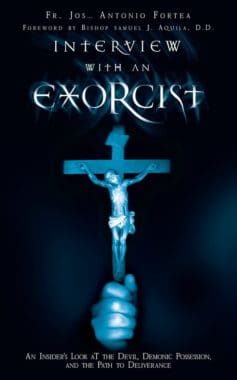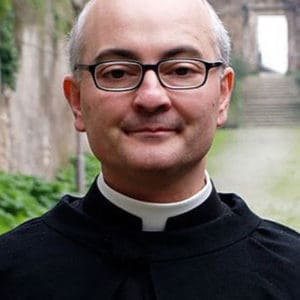Dear Father Fortea, are all demons the same? Are there differences between them regarding power, personality, and things like that?
 No. We have already discussed that each demon sinned in a certain way and with a determined intensity. While the angelic rebellion against God had its roots in pride, from this root other sins grew. This can be clearly seen during an exorcism, when the particular demons possessing the person display sins of anger, self-worship, and desperation, among others. Each demon has its own psychology and its own way of being. For example, some are talkative, others are mocking; some are proud, others are hateful. Even though they all turned away from God, some demons are more evil than others.
No. We have already discussed that each demon sinned in a certain way and with a determined intensity. While the angelic rebellion against God had its roots in pride, from this root other sins grew. This can be clearly seen during an exorcism, when the particular demons possessing the person display sins of anger, self-worship, and desperation, among others. Each demon has its own psychology and its own way of being. For example, some are talkative, others are mocking; some are proud, others are hateful. Even though they all turned away from God, some demons are more evil than others.
As St. Paul and the tradition of the Church indicate, we need to remember that there are nine hierarchies of angels (from highest to lowest): seraphim, cherubim, thrones, dominions, virtues, powers, principalities, archangels, and angels. The superior hierarchies are more powerful, beautiful, and intelligent than the inferior ones. According to St. Thomas Aquinas, each angel is completely different from other angels. In sociological terms, there are no angelic “races”; rather, each one is its own species. As we have said, though, it is possible to group the angels into hierarchies. These hierarchies are also called choirs, since these groups form themselves into choirs that sing praises to God. Their praise is obviously not that of the voice, but rather a spiritual type of praise that comes from their will to know and love the Trinity.
Because some angels from each of the nine hierarchies sinned and transformed themselves into demons, a demonic hierarchy exists. In other words, there are demons that are principalities, virtues, powers, etc. Even though they are demons, they retain their particular angelic power and intelligence.
Exorcisms have shown that superior demons can have power over inferior ones. What does this power consist of? This is something that is impossible for us to know because we cannot see how one demon forces another to do something, since there is no body to push or force. Nevertheless, a more powerful demon can prevent a less powerful one from leaving the body of a possessed person during an exorcism. Even though the weaker demon is suffering and wants to leave, the stronger one may impede it.
 To learn more about spiritual warfare and demonology, Catholic Spiritual Direction recommends Fr. Fortea’s excellent book, Interview With An Exorcist – An Insider’s Look at the Devil, Demonic Possession, and the Path to Deliverance. Published in part with permission by Ascension Press.
To learn more about spiritual warfare and demonology, Catholic Spiritual Direction recommends Fr. Fortea’s excellent book, Interview With An Exorcist – An Insider’s Look at the Devil, Demonic Possession, and the Path to Deliverance. Published in part with permission by Ascension Press.
+
Art for this post on whether all demons are the same: Detail of Padre Fortea 2017, photographed by Elgatoconbotaselgatoconbotas, 5 May 2017 own work, CCA-SA 4.0 International, Wikimedia Commons. Cover of “Interview with an Exorcist” used with permission, all rights reserved. Feature Image Art: Lucifer, the fallen angel (Colorized), Gustave Doré (1832-1883), 1866, PD-worldwide, Wikimedia Commons.




